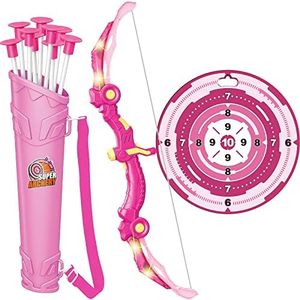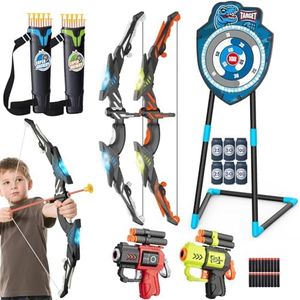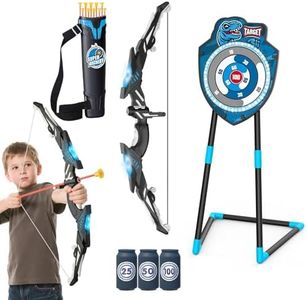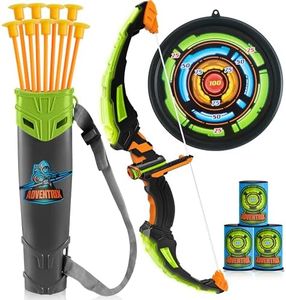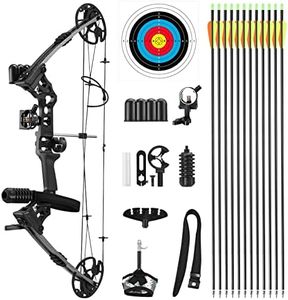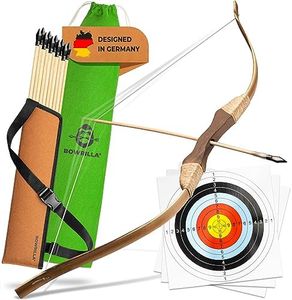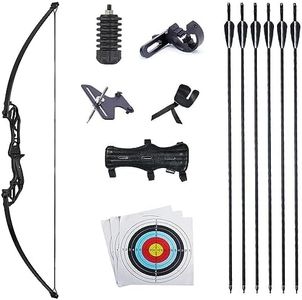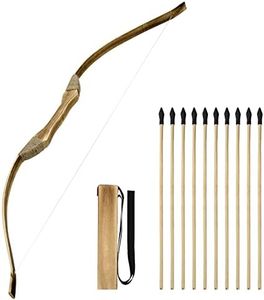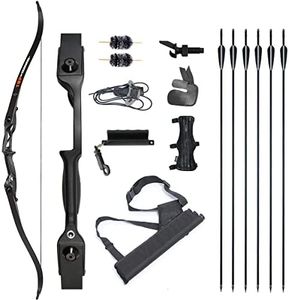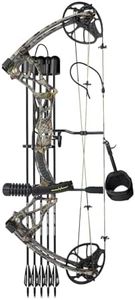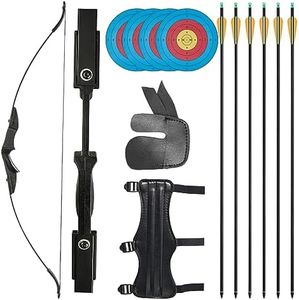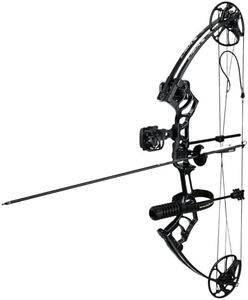We Use CookiesWe use cookies to enhance the security, performance,
functionality and for analytical and promotional activities. By continuing to browse this site you
are agreeing to our privacy policy
10 Best Archery Sets
From leading brands and best sellers available on the web.By clicking on a link to a third party's website, log data is shared with that third party.
Buying Guide for the Best Archery Sets
Choosing an archery set is about finding the right fit for your skill level, physical strength, and the type of archery you want to practice—whether target shooting, hunting, or recreational shooting. It's not just about the bow itself, but also the arrows, accessories, and how comfortable the entire set feels to you. Getting started with the right setup can make archery more enjoyable and help you improve faster. Assess your needs carefully before making a decision.Bow TypeThe bow type refers to the design and style of the bow you choose, such as recurve, compound, or longbow. Recurve bows are simple and versatile, great for beginners and traditional target shooting. Compound bows use a system of pulleys and are better for those who want higher power with less physical effort, often used in hunting or competitive shooting. Longbows are classic and deliver a traditional experience but require more skill to use. Stake your choice on what style of archery interests you and your comfort with handling different mechanisms.
Draw WeightDraw weight is the amount of force needed to pull the bowstring back to its full length. This is important because it affects how powerful your shot will be and how hard it is for you to draw the bow. Lower draw weights (around 10-20 pounds) work well for young archers and beginners, providing easy handling; medium draw weights (20-35 pounds) are suited for teens and casual adults; higher draw weights (over 35 pounds) are typically for hunting or experienced shooters. Your personal strength and comfort should guide you—start with a draw weight you can manage easily and progress as you build strength and technique.
Draw LengthDraw length is the distance from the bowstring to the grip when the bow is fully drawn. It matters because using a bow with the right draw length ensures that you can shoot comfortably and accurately. Shorter draw lengths are generally for younger shooters or those with shorter arms, while longer draw lengths suit adult archers or those with longer arms. When picking, measure your arm span and consult general sizing charts to find a good match—you want the set to feel natural when you pull back the string.
Arrow Material and LengthArrows can be made of various materials like wood, aluminum, carbon, or fiberglass, each with different weights and durability. Lighter arrows are faster but can be less stable, while heavier arrows offer more power and stability. The length of the arrow should match your draw length for safety and efficiency. Beginners commonly start with aluminum or fiberglass for durability, and matching arrow length to your measured draw length ensures you shoot safely and consistently.
Bow Size and WeightBow size refers to its overall length, while weight is how heavy the bow physically feels in your hand. A shorter, lighter bow is easier to handle for young users or beginners, while longer, heavier bows can be steadier and more accurate for adults or experienced archers. Consider your physical build, where you'll be shooting, and how comfortable the bow feels when deciding; lighter and smaller is better for carrying and quick learning, while bigger bows can offer greater precision.
Included AccessoriesArchery sets may include accessories like finger tabs, arm guards, quivers, sights, and arrow rests. The importance of accessories is in convenience and protection—basic sets may have only the essentials, while more advanced sets offer options that help improve aim and safety. Beginners should look for sets that include at least protective gear and a simple sight or rest, to ensure a safe and supportive learning experience.
AdjustabilitySome bows and sets allow for adjustment in terms of draw weight or length, letting the bow 'grow' with you as your skills develop. This flexibility is valuable as it means you'll get more use out of your purchase, and can avoid constantly upgrading as you get stronger or more skilled. If you're new to archery or buying for a young archer, look for sets with adjustable features for the best balance of long-term value and comfort.
